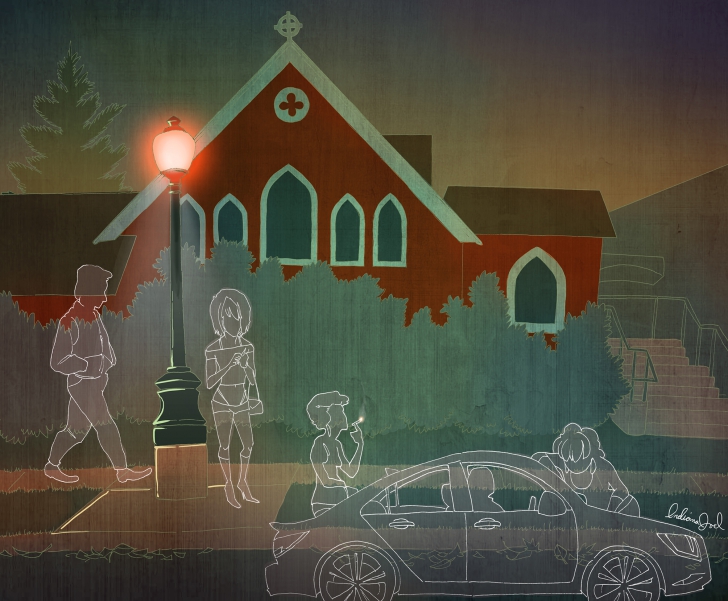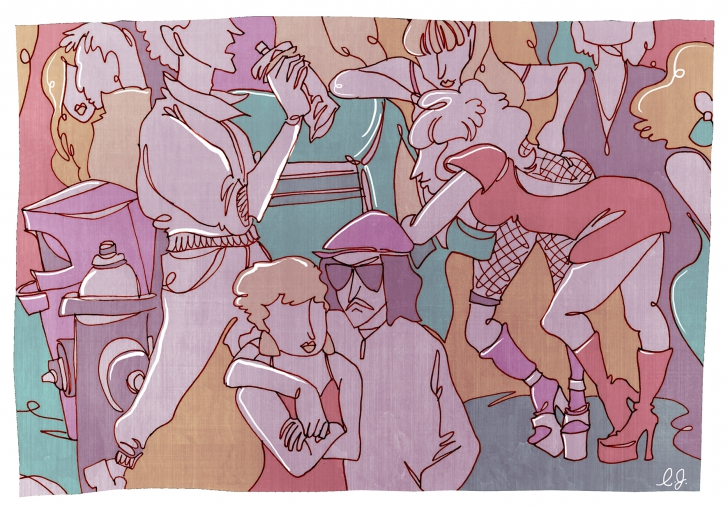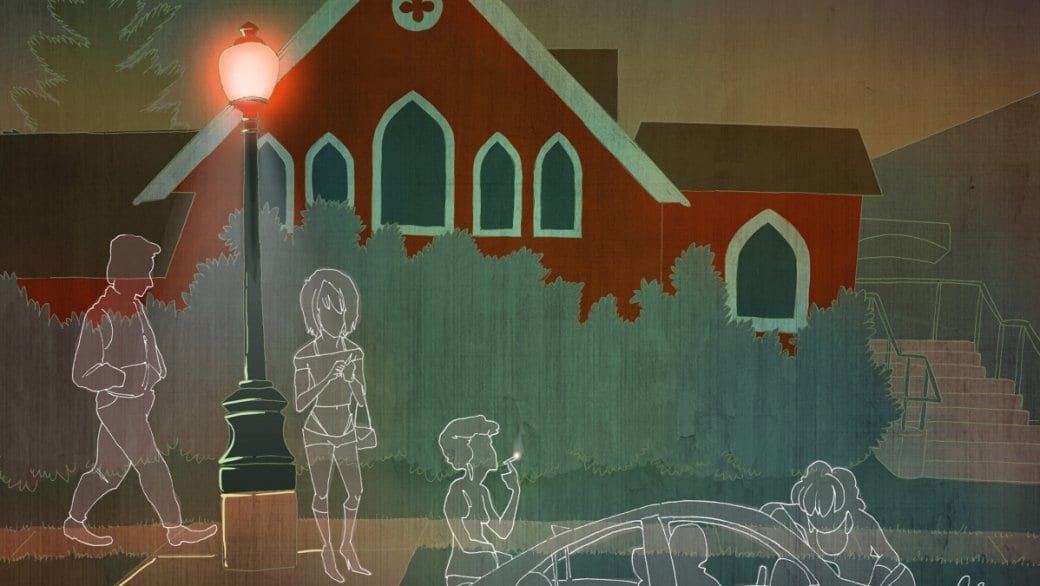Unlike some West Enders, who have been highly critical of the new sex workers memorial on Pendrell Street, I want to congratulate Jamie Lee Hamilton and Becki Ross on its establishment.
The memorial takes no political sides, and speaks to the suffering and dehumanization of a vulnerable group of people.
It marks an episode in our history that should not be forgotten and recognizes a group of people many would rather forget, some of whom were my friends and roommates.
It recalls some bleak moments in our past, such as vigilante-like action by members of Shame The Johns, as they harassed the girls, physically threatened them, and literally drove them from their corners and up Davie to Burrard Street and beyond.
It also remembers the City of Vancouver’s role in driving out the sex workers under a bylaw that was later ruled unconstitutional. Fittingly, the city’s financial contribution to the new memorial is about the amount that it collected in fines from the sex workers. As Stefanie Blaze, a former sex worker, said at a public meeting on the issue, “Where did they think we were going to get the money to pay those fines? Back on the street, of course.” So you might think of the City of Vancouver as the pimp in this story.
Instead of seeking compassionate and effective means to help the sex workers (many of them marginalized, trans, and struggling with addictions and mental health issues), the City and many West End residents chose to further marginalize them and force them deeper into the shadows.
We failed them, as a society, in the same way we failed the mentally ill we threw onto the streets when we closed Riverview Hospital, in the same way we continue to fail those who don’t measure up to our standards for healthy, wholesome, successful citizens. In effect, everyone who isn’t just like us.
I cannot recall a single instance where Gordon Price, who launched his political and academic careers on the backs of these disenfranchised women and young men, or anyone else agitating for their displacement, asked, “What can we do to help?”
There was no concern for the lives and well being of these women. Price’s Concerned Residents of the West End and Shame The Johns just wanted them gone. Where, and to what fate, didn’t enter into the equation.

But to really remember this moment in time, we need to tell the full story — and that story includes some rightly concerned, and extremely imposed upon residents, mostly renters, who just wanted some peace and quiet. A good night’s sleep.
Here’s what it really looked like.
In 1980, when Price founded Concerned Residents of the West End, and other residents formed their Shame The Johns campaign, there were more than 200 prostitutes working the neighbourhood’s streets. On a busy night, 50 or more would be competing for space and customers. It was noisy, it was sometimes raucous, and it was a serious problem for residents seeking peace and quiet in their own homes.
At the height of the controversy, longtime West End resident James Oakes was, along with Kate Trotter, one of two reporters covering the story for the West Ender, where I was editor at the time. Oakes made a tour of the streets and alleys in an unmarked police car, accompanied by a police detective, Vancouver Sun columnist Denny Boyd, and then-MP Pat Carney.
“It wasn’t quite the zoo that some people described, but it was very busy,” Oakes recalls. “There was lots of traffic, prostitutes on every corner, and johns coming and going constantly.”
As Trotter, who also lived near the centre of the action at the time, remembers it: “Most of us weren’t angry about the hookers. They’d been part of the street scene for a decade or more. But it had gotten worse over the years and it was the tricks and the yahoos coming to watch the action who made it unbearable. All I wanted was a good night’s sleep!”
“Continuous traffic, fights, car doors slamming and screeching wheels from dark to dawn,” Trotter recalls. “Seven days a week was the problem. No judgment, no moralizing, just frustration that a couple of workers could disrupt the peace, and sleep, of a hundred or more people . . . And we were told to fuck off when we asked them to tone it down.”
Other women who lived in the area at the time, like West End resident Jacqui Birchall, also recall the scene less benignly than the picture painted by Ross and Hamilton, who seem to think it was an idyllic and peaceable realm of happy hookers taking care of one another and respecting themselves and their neighbours and quietly servicing their clients.
“I was a young woman and a university student,” Birchall says, “and I looked very much like a student with a university sweatshirt and a big bag of books. I got cruised so much. Stupid johns who could not tell the difference between the sex trade workers and baggy-clothed, book-toting students. The sex trade workers were so overt, holding up their skirts and so on. Finally I started recording license plate numbers as a way of protecting myself. I did this very overtly. One man yelled, ‘Oh my god, don’t report me, this is my fiancée’s car!’”

With 50 or more prostitutes on the street during the busiest hours, the comings and goings of their clients, the drunks and other looky-loos cruising the area and yelling obscenities indiscriminately, the mess of litter, condoms and, in later years, needles on lawns and in the alleys, there were times when it did approach zoo-like proportions.
As for the story line that holds that the prostitutes were always looking out for one another and creating their own supportive community, I well remember walking home evenings to my apartment at Broughton and Barclay Streets and being treated to the spectacle of high-volume turf wars between competing girls.
Of course many of the sex workers lived in the neighbourhood too but, considering the disruption to everyone else’s peace and quiet, they were hardly what you’d call good neighbours.
So the frustration with the sex workers and their clients stemmed from more than just a rabid group of vigilantes bent on purging their neighbourhood of unseemly activity, prettifying the streetscape and protecting their property values.
Nor do I think we can draw a substantiated causal link between the sex workers’ expulsion from the West End and their deaths at the hands of predators, though many were likely thrust into unsafe situations in less populated, industrial zones.
But to suggest, as Hamilton has, that the expulsion led directly to the abduction and murder of sex workers in the Downtown Eastside — how could we know that for sure without a nearly impossible mapping of who dispersed where after they were pushed out of the West End?
Many sex workers relocated to Mount Pleasant, some to a short-lived stroll around Kingsway and Fraser, the boys staked out new turf in Yaletown, and some of the women certainly ended up in the Downtown Eastside. But unless reliable reports can be produced connecting former West End sex workers to the roll call of Robert Pickton’s victims, to link them is pure speculation.
For example, my former roommate Chrissy Warren, who I lived with while she was working Davie Street in the early ’70s, died not at the hands of a Downtown Eastside predator, as Hamilton implied to Daily Xtra, but at her mother’s home in White Rock. I spoke with her by phone only a few months before her death.
Other threads in the narrative created by Hamilton and Ross accuse the anti-sex-worker groups of racism and claim that the mini-parks and traffic roundabouts in the West End were created purposefully to break up the flow of prostitution-related traffic. They offer no evidence to support these statements, and I can tell you from covering the story at the time that the second contention is simply untrue.
Still, despite the incomplete and somewhat self-serving narrative surrounding the new memorial, it has already become a touchstone for me, a place where I will sometimes sit to remember and to mourn.
But was it necessary for the creation of this memorial to distort the story of how and why it came to be?
History deserves better. So does Chrissy.
Kevin Dale McKeown was Vancouver’s first out gay columnist, penning “QQ Writes . . . Page 69” for the Georgia Straight through the early 1970s. His Still QQ column for Daily Xtra runs biweekly. Contact him at stillqq@dailyxtra.com.

 Why you can trust Xtra
Why you can trust Xtra


